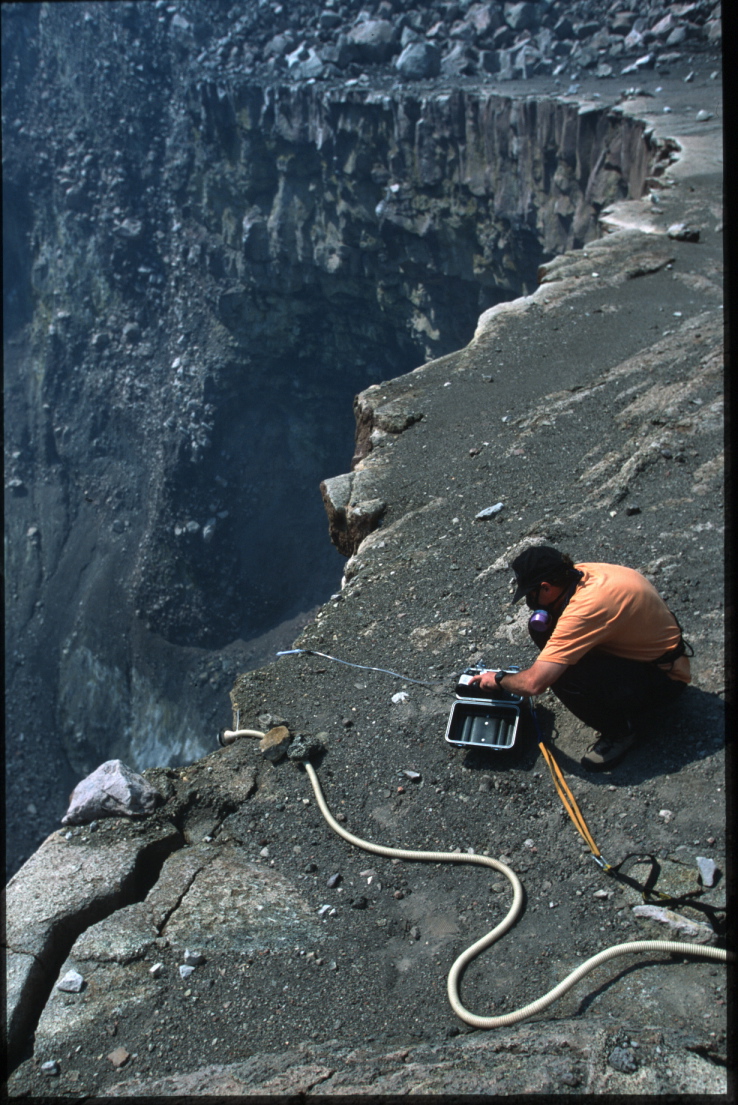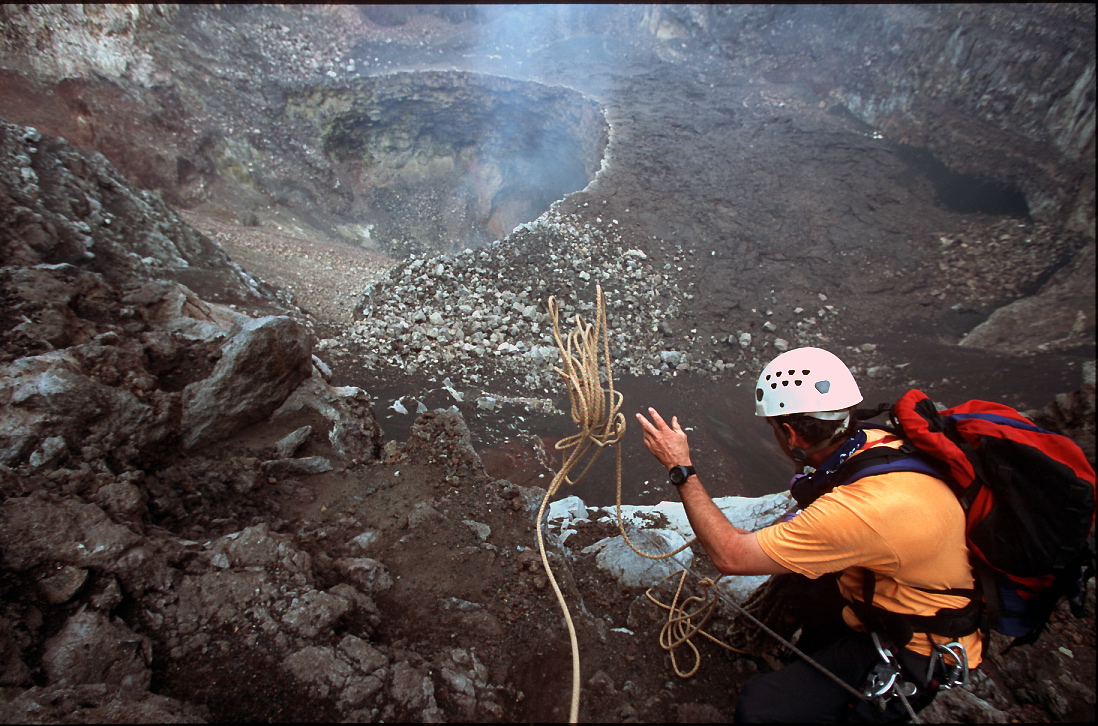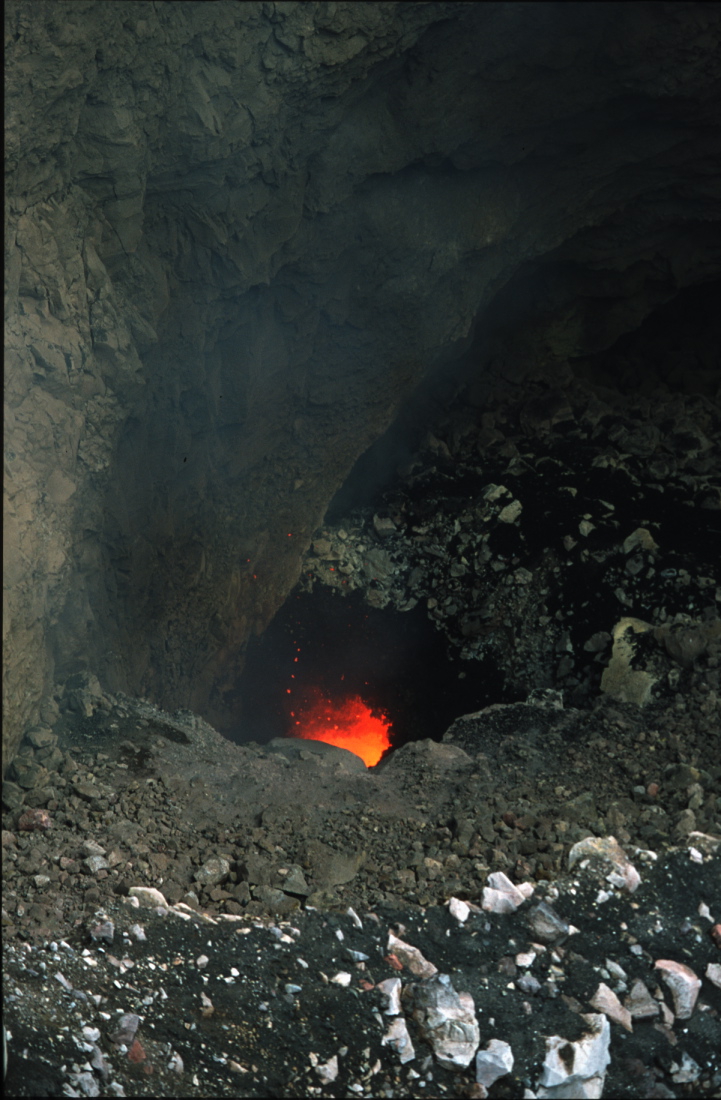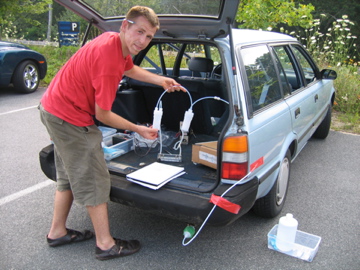Volcanic Emissions of Platinum Group Elements
In this NSF-funded project (NSF-EAR/Petrology & Geochemistry-0538241) we are setting out to determine the flux of platinum group elements (PGE) released by volcanoes, particularly the flux of volatile PGE species. Determining this flux has important implications for the interpretation of stratigraphic layers enriched in PGE. Such enrichments sometimes coincide with large extinction events in Earth's history (e.g., the Cretaceous-Paleogene boundary, better known as Cretacous-Paleogene [K-T] boundary) and have been interpreted as either resulting from impacts of extraterrestrial bodies enriched in PGE or from degassing of the Earth's mantle, a reservoir rich in PGE compared to the Earth's crust. Recently, another important source has added complexity to the interpretation of PGE anomalies: emission and long-range transport of PGE from catalytic converters in automobiles. Unfortunately, the isotopic composition of osmium, one of the PGE, cannot be used effectively as a fingerprint of the source because these three sources have very similar compositions. It is our hope that the relative enrichment of the various PGE can serve as such a fingerprint.
First results from this project (Sims et al., 2004, 2005, 2007) indicate that volcanic aerosols, sampled near volcanic vents using trace-metal clean pumps and filter stacks, have a strongly fractionated PGE distribution pattern that is different from both catalytic converters (enriched in Pt, Pd and Rh, but not Os, Ir and Ru) as well as primitive meteorites (high concentrations of all PGE). So far, our group has sampled Vulcan Masaya in Nicaragua in 2003 and 2006 (see Fig. 1-3) and Mt. Etna in Italy in 2005. Sampling expeditions to the Congo and Hawaii are planned for this year.
This summer Jared Singer, a Senior at the University of Utah, has been joining our group as a WHOI Summer Student Fellow (REU Program) to implement and test a new low-level method for extracting and purifying PGE for mass spectrometric analysis (see photo).
Partners/Collaborators
Ken Sims (WHOI)
Pierre-Jean Gauthier (Univ. Blaise-Pascal, Clermont-Ferrand, France)
Tamsin Mather (Univ. of Cambridge, UK)
David Pyle (Univ. of Cambridge, UK)
Philip Kyle (Director, Mt. Erebus Volcano Observatory)
Sandro Aiuppa (Palermo Univ., Italy)

Ken Sims is sampling volcanic aerosols at the crater rim of Vulcan Masaya, Nicaragua. He is using a pump with a stacked filter cartridge to capture aerosol particles of different sizes from the air stream. (Ken Sims)

Kens is descending into the inner crater of Vulcan Masaya, Nicaragua, to sample volcanic aerosols. (Ken Sims)

A look into the volcanic conduit from the rim of the inner crater of Vulcan Masaya, Nicaragua. (Ken Sims)

Jared Singer, rigging up an aerosol collector to a car exhaust. This experiment was part of his study to test a new method for platinum group element analysis that will be applied to volcanic aerosols. (BPE06)